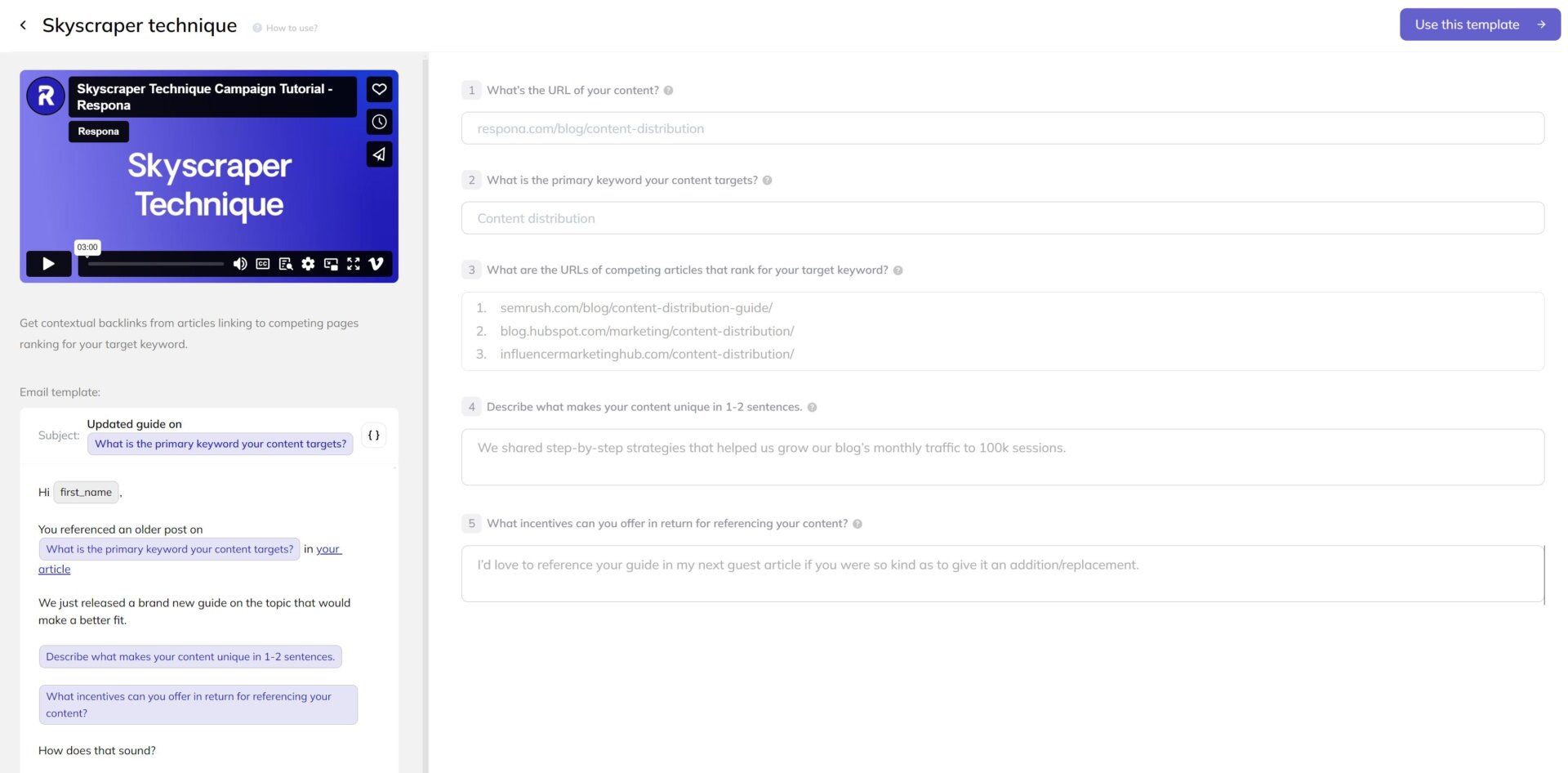
In a digital landscape where content is abundant and attention is scarce, standing out requires more than just good writing—it demands strategic execution. One of the most powerful techniques in the SEO toolkit is the Skyscraper Technique, a method that has consistently proven effective in driving high-quality backlinks and boosting search visibility. As search engines evolve and AI systems like Google’s AI Overview become more prevalent, the need for authoritative, well-researched content has never been greater. This article will walk you through how to effectively use the Skyscraper Technique for link growth, ensuring your content not only ranks but also earns the trust of both users and algorithms.
What Is the Skyscraper Technique and Why It Matters
The Skyscraper Technique is a content marketing strategy designed to help you create content that surpasses existing top-ranking pieces on a given topic. The idea is simple: identify high-performing content, improve upon it, and then promote it to gain backlinks from the same websites that linked to the original piece.
Why does this matter? Because when a piece of content already has a strong backlink profile, it’s likely to rank well. By creating something even better, you increase your chances of earning those same links—and potentially more. This technique is particularly valuable in 2025, as search engines prioritize content that provides real value, and AI systems like Google’s Answer Engine Optimisation (AEO) rely on high-quality, authoritative sources to generate answers.
According to recent data, over 40% of searches now result in direct answers from AI systems, meaning your content must not only rank but also be cited by these platforms. The Skyscraper Technique ensures your content is positioned as a go-to resource, increasing its visibility across both traditional and AI-driven search results.
How the Skyscraper Technique Impacts SEO Performance
Implementing the Skyscraper Technique can have a significant impact on your SEO performance in several key areas:
- Increased Organic Traffic: By outranking existing content, you attract more visitors from search engines.
- Improved Backlink Profile: Earning links from high-authority sites boosts your domain authority and improves your chances of ranking higher.
- Enhanced User Engagement: Better content leads to longer dwell times, lower bounce rates, and higher engagement metrics—all of which are signals that search engines value.
- Better Visibility in AEO: As AI systems increasingly rely on trusted sources, your content becomes more likely to be featured in AI-generated answers.
This makes the Skyscraper Technique a cornerstone of modern SEO strategies, especially when combined with other tactics like content clustering, schema markup, and interactive tools.
Step-by-Step Implementation Framework
Here’s a clear, actionable process to implement the Skyscraper Technique for effective link growth:
- Identify High-Performing Content
- Use tools like Ahrefs, SEMrush, or Moz to find content that currently ranks well for your target keyword.
- Look for articles with high organic traffic, strong backlink profiles, and high engagement metrics.
-
Focus on content that is well-researched but has room for improvement—perhaps it lacks depth, visual elements, or up-to-date information.
-
Create Even Better Content
- Expand on the existing content by adding more insights, data, examples, or multimedia elements.
- Ensure your content is comprehensive, well-structured, and optimized for both users and search engines.
-
Incorporate relevant keywords naturally, and use schema markup to enhance visibility in rich snippets and AI responses.
-
Promote Your Content Strategically
- Reach out to the websites that linked to the original content and share your improved version.
- Personalize your outreach by explaining how your content adds value and why they should consider linking to it.
-
Leverage social media, email newsletters, and community forums to drive traffic and encourage sharing.
-
Monitor and Optimize
- Track your content’s performance using tools like Google Analytics and Search Console.
- Analyze backlink acquisition, traffic trends, and user engagement to identify what’s working and what needs refinement.
- Continuously update your content to maintain relevance and stay ahead of competitors.
Real or Hypothetical Case Study

Let’s look at a hypothetical case study to illustrate the power of the Skyscraper Technique:
Scenario: A SaaS company wants to rank for “how to choose the best CRM software.”
Step 1: They find a top-ranking blog post with 50 backlinks and 10k monthly visits.
Step 2: They create a new guide that includes:
– Interactive comparison charts
– Expert interviews
– Updated industry statistics
– Video tutorials
Step 3: They reach out to the websites that linked to the original post and share their improved version.
Results:
– Within 6 months, the new content ranks #1 for the target keyword.
– It gains 150+ new backlinks from high-authority sites.
– Organic traffic increases by 120%, and the site sees a 30% rise in lead conversions.
This example shows how the Skyscraper Technique can transform a standard piece of content into a powerful link-building asset.
Tools and Techniques for the Skyscraper Technique
To execute the Skyscraper Technique effectively, leverage these modern tools:
- Ahrefs – For competitor analysis, keyword research, and backlink tracking.
- SEMrush – To find high-performing content and track your progress.
- Google Analytics & Search Console – For monitoring traffic, engagement, and technical performance.
- Canva or Adobe Express – To create visually appealing infographics and content assets.
- Hemingway Editor – For improving readability and clarity of your content.
- SurferSEO – To optimize content structure and semantic scoring.
Future Trends and AI Implications
As AI continues to shape the search landscape, the Skyscraper Technique will become even more essential. Search engines and AI models like Google’s AI Overview will increasingly rely on high-quality, authoritative content to provide accurate answers. This means that content that is well-researched, structured, and easy to understand will have a competitive edge.
Additionally, voice search and multimodal search (combining text, images, and video) will demand content that is not only informative but also adaptable to different formats. The Skyscraper Technique helps you build content that can be repurposed across platforms, ensuring maximum reach and engagement.
To stay ahead, focus on creating content that is both human-readable and machine-friendly. Use schema markup, include interactive elements, and ensure your content is regularly updated to reflect the latest trends and data.
Key Takeaways
- The Skyscraper Technique is a powerful way to create content that outranks competitors and earns high-quality backlinks.
- It involves identifying top-performing content, improving it, and strategically promoting it to gain links.
- The technique is especially valuable in 2025, as AI and search engines prioritize authoritative, well-researched content.
- Tools like Ahrefs, SEMrush, and Google Analytics can help you track and optimize your efforts.
- Stay ahead of the curve by creating content that works for both humans and machines.
Ready to take your SEO strategy to the next level? Start by applying the Skyscraper Technique today and watch your backlink profile—and your rankings—soar.
Meta Title: How to Use the Skyscraper Technique for Effective Link Growth
Meta Description: Learn how to use the Skyscraper Technique to create high-quality content that outranks competitors and builds valuable backlinks.
SEO Tags (5): skyscraper technique, link building, content marketing, SEO strategy, backlink growth
Internal Link Suggestions:
– [Parameter #7: Guest Posting for SEO Success]
– [Parameter #9: Content Marketing Strategies for 2025]
– [Parameter #14: Building Authority Through Testimonials and Reviews]
External Source Suggestions:
– https://ahrefs.com/blog/skyscraper-technique/
– https://www.semrush.com/blog/skyscraper-technique/
– https://moz.com/blog/the-skyscraper-technique-step-by-step-guide







